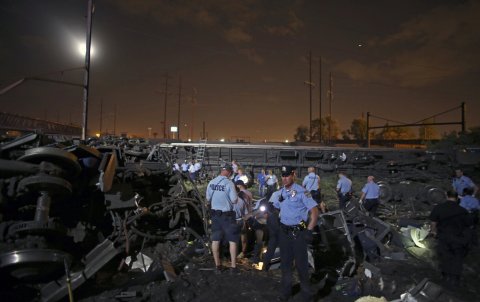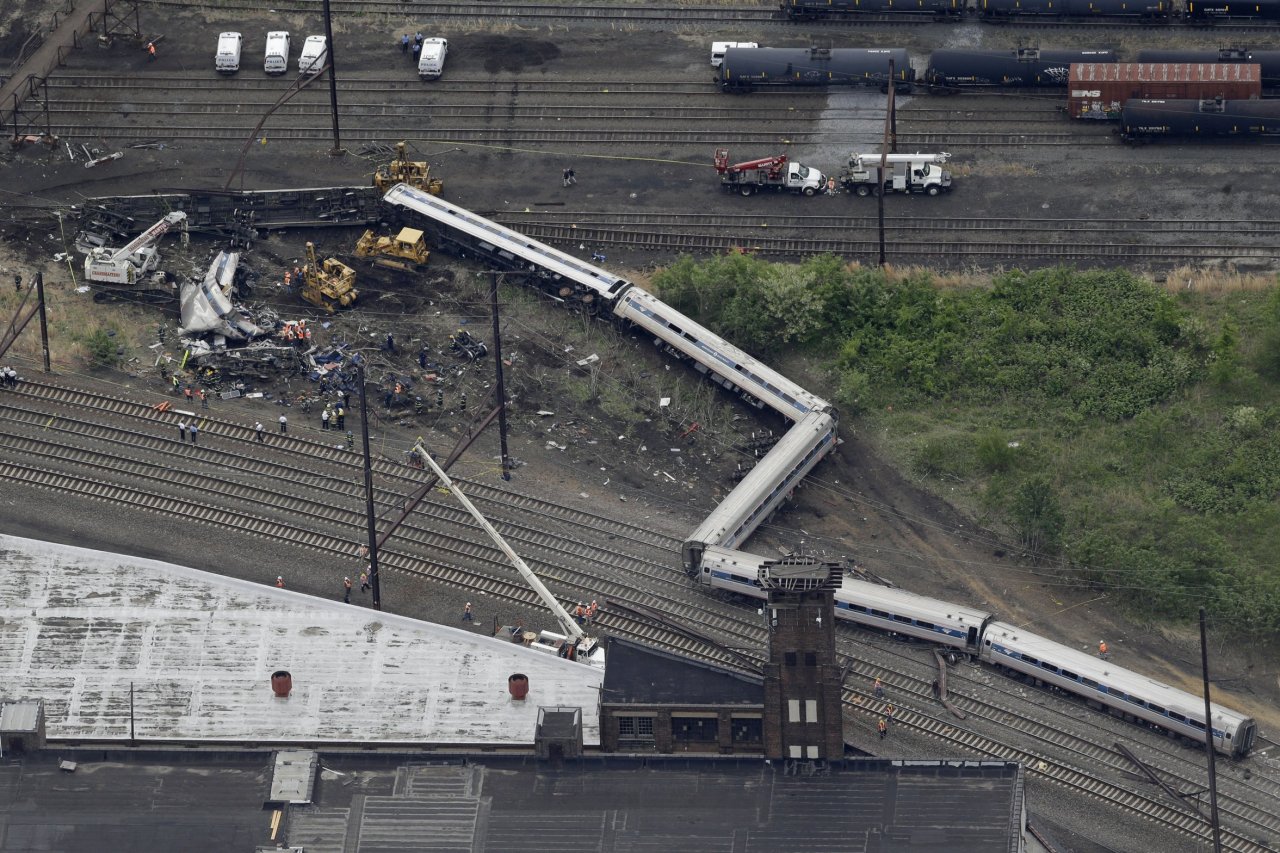Cars can now drive by themselves. Automatic pilot systems can fly a jet airliner much of the time. Why is it so hard to make trains that can stop on their own? You don't even have to steer the damn things.
Ever since the Amtrak crash near Philadelphia, we've been hearing about half-installed technology—called positive train control—that could have prevented such a disaster. Why is PTC half-installed? Well, because it is a multiheaded, custom-made beast that comes with the kind of crazy costs reminiscent of the Pentagon's famous $640 toilet seat. In this era of fast-moving, Agile-programmed, cloud-based technology, PTC's development is so plodding, it seems like it's being coded on 1950s punch card machines.
PTC is costing the nation's railroad industry more than $9 billion. A federal law passed in 2008 mandated that PTC be in place by the end of this year, but the industry has been lobbying for an extension to 2020. By that time, it's likely that an iPhone app will be able to drive a train. In any kind of competitive industry, technology makes huge leaps in five years. Whatever PTC is today, it should be 10 times cheaper and 10 times better by 2020. But if past is prologue, that won't be the case.
The basic idea of PTC is straightforward: It is supposed to track a train's location and match that to speed limits and other factors, such as the weather and size of the locomotive, so it can safely control the train's pace. The system requires positioning technology, wireless communication, data crunching and automated controls. Nothing too exotic there. PTC is not just one technology but a system of stuff that has to be integrated. This can be a bear sometimes but is not out of the ordinary.
I asked Ed Greenberg of the Association of American Railroads, which represents the rail industry, about the cost of PTC, and he ticked off seemingly daunting numbers. It has to be installed in 23,000 locomotives. Some 474,000 mileposts, curves and signals have to be mapped. Another 36,000 signaling boxes to transmit data and 20,000 antennae will be needed. But keep in mind that it's been the AAR's job to complain about the government's imposition of PTC. One of its background papers says: "AAR's main argument: Allow freight and passenger railroads more time to implement PTC." The industry wants the task to seem onerous.
But, for perspective, look at the situation through Silicon Valley eyes. Let's say that in its 2009 founding business plan, Uber bitched that by 2015 it was going to have to install its technology in 162,000 cars and give it to 8 million customers, as well as map every major city in the world to track company vehicles. The whole thing would've been a serious buzzkill. Of course, Uber got there quickly and relatively cheaply by leveraging existing technology.

PTC is not leveraging existing technology. Instead, it has been built pretty much from scratch, starting when the law was passed in 2008—a year after Apple introduced the iPhone. The entire high-speed mobile data infrastructure that has taken over the way we live and work has been built since 2008. PTC seems to be separate from that—built on a whole other infrastructure just for trains. And that strategy apparently hasn't gone well. "The technology is immature at best and unproven at worst," Frank Lonegro, now vice president of service design for CSX Transportation, once told Progressive Railroading.
Who's building PTC technology? One of the leading companies is Wabtec—a shortened version of Westinghouse Air Brake Technologies. When was the last time you put the words innovative technology and Westinghouse together in your mind? It's based in Wilmerding, Pennsylvania, on the outskirts of Pittsburgh. On May 13, the day after the Amtrak crash, Wabtec announced a 33 percent dividend increase thanks to, as CEO Raymond Betler said, "our current financial performance and future outlook." The PTC business is quite good.
Another company claiming PTC leadership is Herzog Technologies, headquartered in North Texas with outposts in Cedar Rapids, Iowa, and Oceanside, California—a half-dozen blocks from the beach near Carlsbad. On Glassdoor.com, one former employee, who thought Herzog was a great place to work, noted, "It's too bad upper management couldn't control budgets." Maybe that's another hint about PTC's high cost.
A few better-known technology giants are involved in PTC, including General Electric, Cisco, and Siemens. But they have lesser roles compared with railroad-centric companies such as Wabtec and Herzog. All in all, the technology is scattered among industrial companies that are building it one contract at a time, often in small batches. In 2013, Wabtec and Herzog teamed on a $9 million contract to install PTC for California's North County Transit District, which has all of seven locomotives. Another Wabtec PTC contract was for $34 million for the Seattle area's Sound Transit rail line. Deals like that don't suggest great economies of scale for the technology—another clue to its high cost.
As for the capabilities of PTC, compare its challenge to Google's self-driving car project, which got its start at a 2005 Defense Advanced Research Projects Agency contest. In a lot of ways, automatically driving a car is a more devilish problem than controlling a train. A car has to steer. It has to recognize and maneuver around a constantly changing tableau of other cars, pedestrians, bikes, dogs and whatever else runs onto the road. It has to deal with roads that are different sizes, shapes and quality, governed by a variety of stoplights and traffic signs. By now, Google cars have driven 1 million miles autonomously, and they haven't been in a single accident that was their own fault. Now the technology is going to a next level of testing on public roads. Car companies are lining up to offer some form of self-driving capability within the next few years.
Trains, though, run on tracks—no turning involved. There is little reason to equip a self-driving train system to maneuver around obstacles. A train can do only two things: go faster or stop. A typical engineer's cab has three different brake handles, a throttle lever and a bunch of dials. Now, there is certainly an art to stopping a mile-long freight train without breaking it in two, or safely stopping a 100 mph Acela train. But without a doubt, today's technology can do this, and tomorrow's technology will be able to do it without a human in the cab.
Amtrak is getting blamed for failing to have a working PTC system in place. But the technology itself has all the characteristics of an overpriced hairball. Maybe it's time to put those iPhone app developers on the case.





















